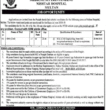You’re at the helm of a bustling construction site, where safety is paramount. But what really makes a construction site safe? Understanding this can mean the difference between a smooth project and a hazardous one. This blog post is going to delve into key factors that ensure safety, ensuring every nut, bolt, and hard hat contributes to a secure, efficient, and productive environment.
Comprehensive Risk Assessment
A comprehensive risk assessment is a fundamental step in ensuring construction site safety. It involves a meticulous evaluation of the potential hazards that may exist on the job site. This includes, but is not limited to, falling objects, equipment failure, electrical hazards, and potential injuries from heavy lifting. A skilled and experienced catastrophic injury lawyer can tell you that every possible risk, no matter how minor it seems, should be identified, evaluated, and managed. Once these risks are assessed, appropriate measures can be implemented to either eliminate or minimize these hazards.

This might include training programs for workers, usage of appropriate personal protective equipment (PPE), regular machine maintenance, and stringent safety protocols. Regular reviews and updates of the risk assessment are also crucial, given that construction environments change frequently with the progress of the project. In essence, a comprehensive risk assessment serves as a proactive approach to maintaining a safe working environment, preventing mishaps, and ensuring the welfare of every individual onsite.
Proper Training and Education
This process equips workers with essential knowledge and skills to carry out their tasks safely and efficiently. Training covers various aspects such as handling equipment, understanding safety protocols, and learning how to respond to emergencies. For example, a worker trained in operating a crane is less likely to cause an accident due to improper use. Education, on the other hand, raises awareness about the potential hazards and the importance of safety measures in preventing accidents.
Informative sessions about the proper use of personal protective equipment (PPE), or the correct lifting techniques, can drastically reduce work-related injuries. Moreover, a workforce that is educated about the dangers associated with their work environment is more likely to take safety protocols seriously, contributing to a safer work environment. Therefore, a combination of training and education is essential for maintaining a safe construction site.
Clear Safety Policies and Procedures
Construction companies implement various policies and procedures in their work environment in order to make them safer and provide peace of mind to themselves and their workers. Here are the most significant ones:
- Personal protective equipment
- Fall protection
- Hazard communication and chemical handling
- Electrical safety
- Fire prevention and emergency response
- Equipment operation and maintenance
- Excavation and trenching safety
- Traffic control and pedestrian safety
- Confined space entry
- Ladder and scaffold safety
- Material handling and storage
- Noise and hearing protection
- Heat and cold stress
- Environmental protection
- Drug and alcohol policy
Safety policies are pivotal in ensuring construction site safety. These definitive rules and guidelines act as a blueprint, dictating the standards for safe operations on the job site. They encompass a vast range of aspects, from the use of personal protective equipment to procedures for handling hazardous materials. Regular enforcement and adherence to these policies ensure all activities are performed safely and potential hazards are mitigated, fostering a safe and secure working environment for all personnel.
Regular Inspections and Maintenance
Inspections involve routine checks of the site, tools, and equipment to identify any signs of wear and tear or potential hazards. This proactive approach allows for early detection of issues, mitigating risks before they escalate into serious incidents. Similarly, preventive maintenance of machinery and equipment ensures they function optimally, reducing the risk of malfunctions that could lead to accidents.
In essence, inspections and maintenance activities are not just about fixing problems, but about anticipating them, ensuring the construction site remains a safe environment for all workers. Together, these practices form a critical line of defense in the ongoing effort to prevent incidents and maintain a high level of safety on construction sites.
Like Us on Facebook!
Personal Protective Equipment
Personal Protective Equipment (PPE) serves as a physical barrier between the worker and the potential hazards they might encounter, minimizing the risk of injuries. For instance, hard hats protect against falling objects, safety glasses prevent eye injuries from flying debris, ear plugs shield against damaging noise levels, and safety boots guard against crushing hazards.
Subscribe Us on YouTube!
Moreover, high-visibility clothing ensures workers are easily noticeable, reducing accidents involving machinery. Gloves protect hands from cuts, chemical burns, and other hazards, while respirators filter harmful substances to prevent respiratory damage.
By wearing proper PPE, workers can effectively mitigate the risk of injuries and accidents, contributing to a safer construction environment. Remember, PPE should be appropriately fitted, maintained, and used under the guidance of comprehensive safety training.
Site Organization and Housekeeping
Effective site organization and housekeeping play a key role in maintaining construction site safety. A well-organized site helps to prevent accidents by ensuring clear access routes, reducing the likelihood of trips and falls, and making it easier to locate tools and equipment.
Housekeeping, on the other hand, involves the regular removal of waste materials and the cleaning of workspaces, which can prevent the build-up of potentially hazardous substances. Regular housekeeping also allows for the early identification of maintenance issues or safety hazards. Together, site organization and consistent housekeeping foster a safer, more efficient work environment.
Emergency Preparedness and Response
This involves planning for potential emergency situations, such as fires, building collapses, or medical emergencies, and determining the appropriate responses to each. Preparation includes training workers on emergency procedures, equipping the site with necessary emergency equipment like fire extinguishers and first aid kits, and ensuring clear access to exit routes. In the event of an emergency, a prepared and well-drilled team can react swiftly and effectively, minimizing potential injuries and damage.
Emergency drills should be conducted regularly to reinforce procedures and maintain readiness. This proactive approach not only helps to mitigate the impact of potential emergencies but also contributes to an overall culture of safety and preparedness on the construction site.

In conclusion, prioritizing safety on your construction site is essential to prevent accidents and ensure a smooth workflow. By performing comprehensive risk assessments, providing adequate training, enforcing safety policies, conducting regular inspections, using PPE, organizing your site effectively, and preparing for emergencies, you can create a safe and efficient environment. Remember, a secure construction site not only prevents injuries but also contributes to the overall success of the project.




















